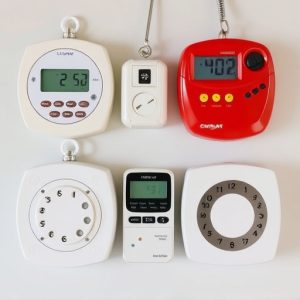Discrete Wearable Alarms: Personal Safety Sirens, Avoiding False Activations
Discrete wearable security alarm systems, featuring the powerful Personal Safety Siren, offer indivi…….
Discrete wearable security alarm systems, featuring the powerful Personal Safety Siren, offer individuals a compact, portable solution for enhanced safety. These devices emit loud sounds upon manual activation or automatic sensor triggers, deterring threats and drawing attention. Key advantages include ease of use, minimizing false alarms, and ensuring swift emergency responses without unnecessary distress calls. Equipped with advanced features like motion sensors, gesture recognition, AI algorithms, and GPS tracking, these systems distinguish genuine emergencies from everyday activities. Regular updates ensure reliability, allowing users to customize sensitivity levels based on their environment and activities.
“Discover the revolutionary power of discrete wearable security alarm systems, a personal safety solution redefining peace of mind. This article explores how these innovative devices operate and highlights their diverse benefits, from enhanced personal protection to emergency response capabilities.
We delve into the key features that make them indispensable, focusing on the critical aspect of minimizing false alarms, especially through advanced activation mechanisms. Uncover the role of the Personal Safety Siren as a game-changer in emergency situations.”
- Understanding Discrete Wearable Security Alarms: How They Work and Their Benefits
- Personal Safety Siren: A Powerful Tool for Emergency Situations
- Avoiding False Alarms: Tips and Features to Ensure Reliable Activation
Understanding Discrete Wearable Security Alarms: How They Work and Their Benefits
Discrete wearable security alarm systems, often referred to as personal safety sirens, are compact, portable devices designed to enhance individual safety. They work by emitting a loud, distinct sound when activated, which can deter potential threats and draw attention to the wearer’s location. These alarms are typically triggered manually through a button press or automatically in response to certain sensor inputs, such as rapid movement or impact.
One of the key benefits of discrete wearable security alarm systems is their ease of use. They provide individuals with an accessible personal safety net, allowing them to protect themselves discreetly in various situations. By eliminating the need for complex installation or continuous monitoring, these devices offer a convenient and cost-effective solution for anyone seeking added peace of mind, whether during solo activities, travel, or while navigating unfamiliar environments. Additionally, their ability to prevent false alarms ensures that emergency services are only alerted when truly necessary.
Personal Safety Siren: A Powerful Tool for Emergency Situations
In emergency situations, the Personal Safety Siren is a potent tool for individuals equipped with discrete wearable security alarm systems. This powerful feature allows users to quickly and discreetly signal for help, deter potential threats, and alert nearby bystanders or authorities. Unlike traditional alarms that can lead to false alarm concerns, the siren’s design focuses on its effectiveness during real-time emergencies, ensuring a swift response without unnecessary distress calls.
The Personal Safety Siren offers a simple yet robust solution for personal safety, especially in remote or isolated areas where immediate assistance might be challenging to obtain. Its compact size and subtle appearance make it an ideal addition to wearable security devices, providing users with peace of mind and the confidence to navigate potentially dangerous situations with added protection.
Avoiding False Alarms: Tips and Features to Ensure Reliable Activation
Discrete wearable security alarm systems are designed to enhance personal safety, but one of their primary challenges is avoiding false alarms. A reliable system should incorporate advanced features to ensure only genuine emergencies trigger the siren. For instance, motion sensors with gesture recognition can differentiate between sudden movements indicative of danger and everyday activities like walking or stretching. Some devices use AI algorithms that learn users’ routines, enabling them to set personalized sensitivity levels. Additionally, integrating GPS tracking allows the alarm to verify if a user has actually left a safe zone, reducing false triggers from accidental movements.
To further minimize false alarms, these systems often come with adjustable settings for different scenarios. Users can customize response modes based on their environment and activities. For example, a quiet setting might be appropriate at home, while a higher sensitivity level is useful during outdoor adventures or in areas with high crime rates. Regular updates and patches are also essential to fix bugs and improve algorithms, ensuring the system remains reliable over time.
Discrete wearable security alarm systems, such as the Personal Safety Siren, offer a powerful combination of personal safety and reliability. By understanding how they work and implementing tips to avoid false alarms, these devices can provide peace of mind in emergency situations. The Personal Safety Siren serves as a testament to the advancement of portable safety technology, ensuring folks are equipped with a game-changer for self-defense and quick response.


